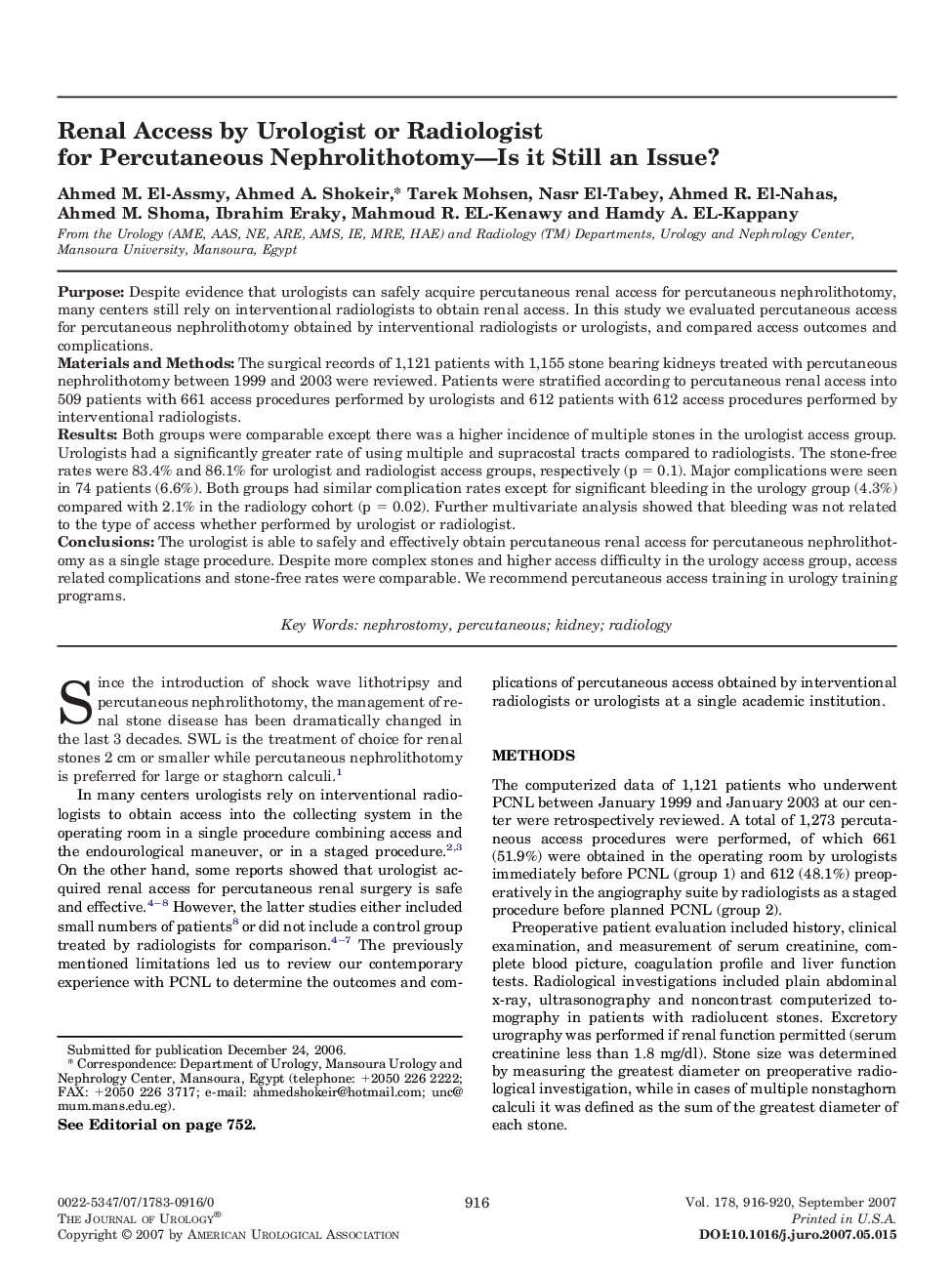| کد مقاله | کد نشریه | سال انتشار | مقاله انگلیسی | نسخه تمام متن |
|---|---|---|---|---|
| 3877960 | 1599004 | 2007 | 5 صفحه PDF | دانلود رایگان |

PurposeDespite evidence that urologists can safely acquire percutaneous renal access for percutaneous nephrolithotomy, many centers still rely on interventional radiologists to obtain renal access. In this study we evaluated percutaneous access for percutaneous nephrolithotomy obtained by interventional radiologists or urologists, and compared access outcomes and complications.Materials and MethodsThe surgical records of 1,121 patients with 1,155 stone bearing kidneys treated with percutaneous nephrolithotomy between 1999 and 2003 were reviewed. Patients were stratified according to percutaneous renal access into 509 patients with 661 access procedures performed by urologists and 612 patients with 612 access procedures performed by interventional radiologists.ResultsBoth groups were comparable except there was a higher incidence of multiple stones in the urologist access group. Urologists had a significantly greater rate of using multiple and supracostal tracts compared to radiologists. The stone-free rates were 83.4% and 86.1% for urologist and radiologist access groups, respectively (p = 0.1). Major complications were seen in 74 patients (6.6%). Both groups had similar complication rates except for significant bleeding in the urology group (4.3%) compared with 2.1% in the radiology cohort (p = 0.02). Further multivariate analysis showed that bleeding was not related to the type of access whether performed by urologist or radiologist.ConclusionsThe urologist is able to safely and effectively obtain percutaneous renal access for percutaneous nephrolithotomy as a single stage procedure. Despite more complex stones and higher access difficulty in the urology access group, access related complications and stone-free rates were comparable. We recommend percutaneous access training in urology training programs.
Journal: The Journal of Urology - Volume 178, Issue 3, September 2007, Pages 916–920